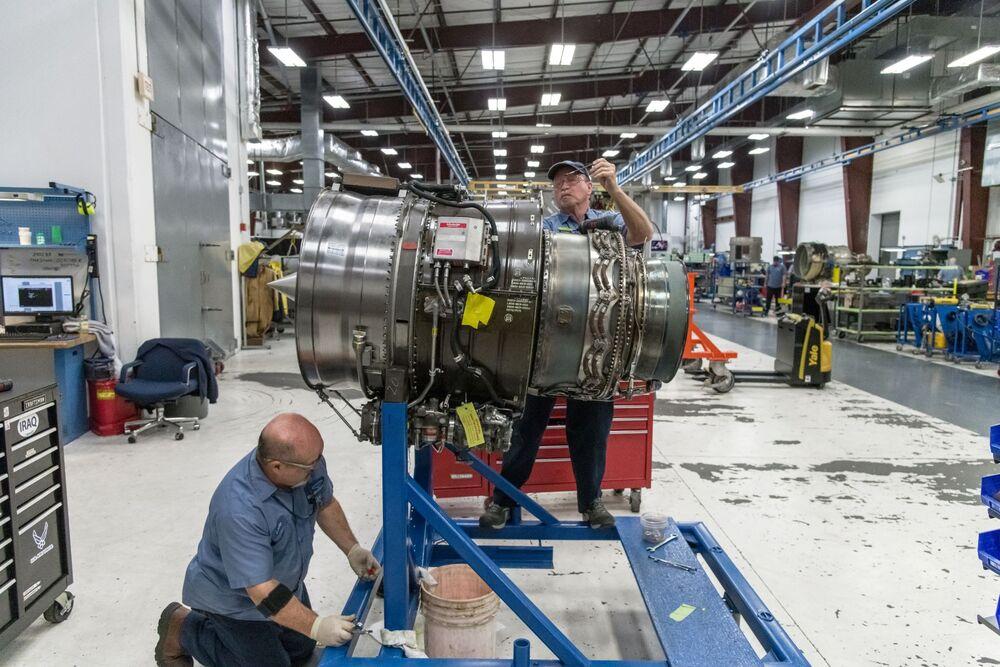
Work is picking up for aircraft engine MROs as commercial air travel continues to increase, but a lack of skilled labor is casting a shadow over a potential recovery.
The MRO market was expected to recover to pre-COVID 2019 levels by 2022-23, but according to an Oliver Wyman forecast, there is a 39% decline in MRO revenues across the industry.
The drop in MRO spending is pronounced in the sector’s biggest and most expensive segments: engines and airframes. Deferred engine overhauls and parked fleets made engine spending fall from $43.5 billion pre-COVID to $23.2 billion post-COVID.
Shortages of cabin staff made headlines during the pandemic, but at the same time there was another critical segment that could keep planes from flying: a shortage of technical-skilled workers.
Oliver Wyman’s annual MRO survey for 2022 cited a lack of technical staff as the main disruptor for the MRO industry over the next five years.
The survey found that approximately 80% of its U.S. respondents were having trouble finding mechanics and technicians. Approximately 65% of its European respondents and 79% of respondents in other countries indicated they were facing the same issue.
The entire industry saw a wave of retirements during pandemic. With a reduction in available work, many technicians chose to retire early while others lost their jobs due to cost-saving measures by MROs.
However, there were a few MROs, such as engine specialist Aero Norway, that introduced specific measures to retain all their staff.
“We used the time during COVID-19 to see though streamlining efficiency improvements across the facility and also introduced a range of lighter work scopes to help our customers manage their engines at optimum cost-effectiveness as flights started to ramp up,” says Neil Russell, Aero Norway’s chief operating officer.
Russell adds that the industry also saw a huge impact on its MRO supply chain, which is also facing labor shortages. “A lot of the suppliers let people go during COVID and struggle to get them back, or train people quick enough,” he says. “This in turn limits the capacity at the suppliers and can impact [turnaround times] as well. The suppliers are really trying hard to overcome this and hopefully by Q3 and Q4 this year they will be past the recovery stages.”
Now that the industry is showing some signs of recovery, the MRO segment is finding difficulty in ramping up hiring as quickly as desired due to the reduced pool of available talent. Therefore, the biggest challenge MRO companies are facing is how they can attract new talent to their companies.
Malisa Chambliss, senior vice president of human resources at StandardAero, says the company is focusing heavily in recruiting efforts. “StandardAero has made some recent and very significant investments in talent acquisition resources and systems,” she says. “In addition, we continue to partner with local technical schools and have established successful apprenticeship and training programs to develop new talent.”





